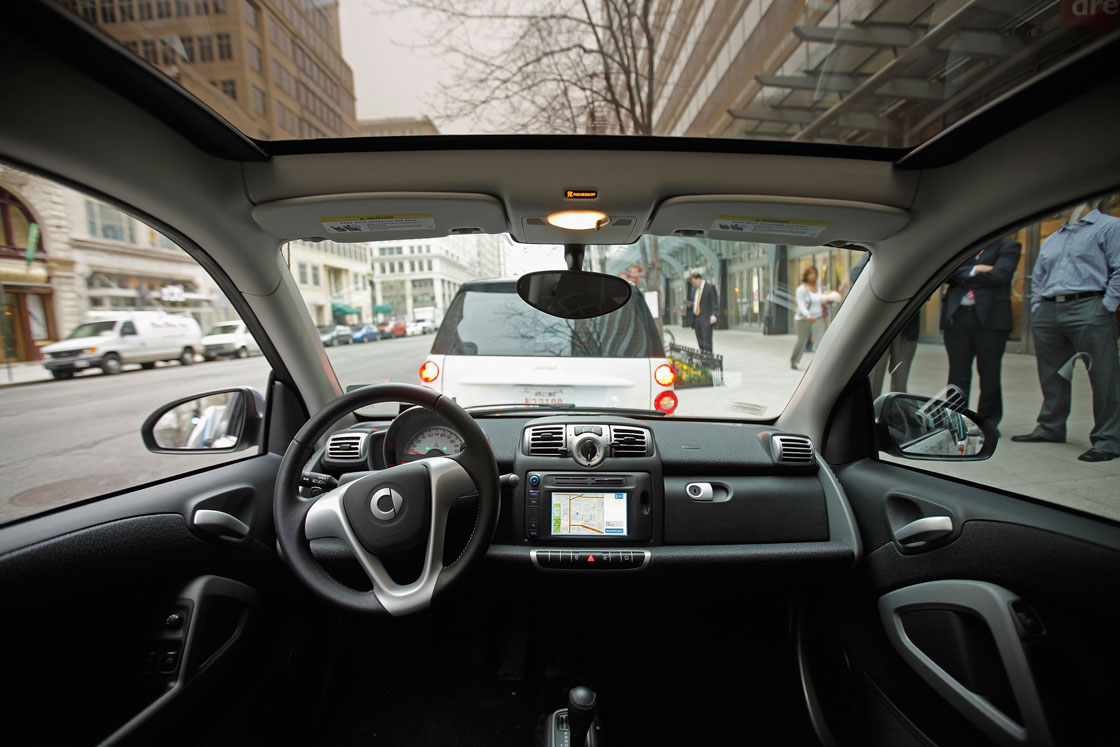TORONTO – Researchers are warning that plans to provide high-speed Internet access in Canadian vehicles will pose a great safety risk to drivers who are easily distracted by voice-operated devices.

“Because of the potential for driver distraction, safety should be of great concern,” said University of Toronto professor Ian Spence, author of a new study on the impact of auditory distractions on visual attention.
“Many people assume that talking to a voice-operated device will be as safe as using a hands-free cell phone, but neither activity is safe.”
In September, Canadian telecom provider Rogers Communications and U.S. carrier Sprint announced plans to bring wireless service to automakers.
The plan would allow automakers deploying Sprint’s Velocity platform – developed specifically for the auto industry – to use Rogers’ wireless networks, including its high-speed Long-Term Evolution (LTE) network.
Read More: Rogers and Sprint offer the ‘connected car’
Drivers with the option could then use a touchscreen on the dashboard or voice-commands to access weather or accident alerts, and receive customized packages of news and sports. The technology would also open the possibility of passengers watching TV on demand while on the road.
But a sobering study, conducted by Spence and a team of researchers, found that these types of technology act as a distraction to drivers – leading them to react slower behind the wheel, possibly resulting in a serious collision.
- What is a halal mortgage? How interest-free home financing works in Canada
- Ontario doctors offer solutions to help address shortage of family physicians
- Capital gains changes are ‘really fair,’ Freeland says, as doctors cry foul
- Budget 2024 failed to spark ‘political reboot’ for Liberals, polling suggests
Researchers asked subjects to perform an “attentional visual field test” where they repeatedly identified the random location of an object in visual clutter on a computer monitor while carrying out a range of listening and speaking tasks.
For example, subjects were asked to do tasks as simple as listening to news radio, to answering yes or no questions while performing the visual test. Sometimes subjects were asked to answer verbally, other times they were asked to merely think about their answers.
According to the study, poor performance on this test is known to be a good predictor of unsafe driving.
“It did not matter whether the subject spoke the answer aloud or simply thought about the answer,” said Spence.
“It was the thinking, not speaking, that caused them to slow down.”
Spence warns that on the road this delay could cause a serious accident.
“At 50 kilometres per hour, a car travels 13.9 metres in one second. A driver who brakes one second earlier than another driver to avoid a collision, will either prevent it completely or be travelling more slowly when it occurs, lowering the probability of severe injury or fatality,” he said.
“A delay in braking by as much as one second presents a significant threat to safe driving and casts doubt on the belief that hands-free voice-controlled devices reduce driver distraction.”
In a statement to Global News, Spence said that while Internet connection in cars is inevitable, drivers need to work out ways of using these features wisely.
Some tech companies have recently introduced software features in hopes of combating distracted driving.
Read More: Microsoft’s phone update to feature driving mode
This week, Microsoft unveiled a smartphone software update that includes a new “Driving Mode” that will automatically silence incoming calls and texts when the phone is linked wirelessly with a Bluetooth device in the car.
Apple has a feature called “Do Not Disturb” which can silence calls and texts, however the user must manually turn it on when needed.
Spence notes that while this is a welcome feature, the downfall in these efforts are that users must choose to turn it on.
“If the driver doesn’t switch it on, there is no value to the feature; calls and texts will come through as you drive. Maybe it would be better for Microsoft and Apple to have these safety features switched on by default,” Spence said via email.






Comments